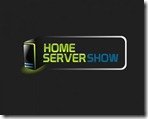The Home Server Show Podcast Episode 116
Episode 116 of "The Home Server Show" podcast is up with the weeks Home Server news and views plus some commitments from the WHS team at Microsoft.
You can listen to it from here.
Episode 116 of "The Home Server Show" podcast is up with the weeks Home Server news and views plus some commitments from the WHS team at Microsoft.
You can listen to it from here.
Nick Asseloos creator of many a add-in including AutoExit and AdminiMe for Windows Home Server has written an article that shows an example of how to create a Client Side installer for Vail, that can be distributed to the client machines. It requires the Windows Home Server Development Kit-2 and the Windows Home Server SDK.
Its a great 5 page PDF document which you can get from here.

Have a question or problem?
I can’t guarantee an answer, but I’ll try. Click “ask a question” above!
This week the spotlight has been around the open source alternatives to Microsoft’s Windows Home Server. There are many alternatives to WHS and it is very surprising just how worthy some of them really are, what’s more surprising is how many people are looking at the possibility of moving to some of them on offer.
It takes an incredible amount of faith to put all your home videos/photos, hundreds sometimes thousands of £/$ of music, and in many cases there entire film/DVD collection to an operating system like Windows Home Server, could you have the same trust/confidence in an unknown operating system?
I am not trying to discourage anyone from using open source software, after all many people really on open source software and I am certainly one of them, but I would say make sure you have a failsafe backup and make sure you have read reviews and write ups, about the pros and cons about any of the alternatives.
Michael Asks:
Due to the drive extender issue I am thinking about getting a different package rather than updating WHS without drive extenders. My question is what are some of the options out there? Any open source packages available?
Also Varun Asks:
So I was part of the shocked DEv2 removal crowd. I firmly believe that Vail is DOA without DE. What alternatives do we have? Have you tried any?
I’m trying out Amahi, and had a FreeNAS machine for a few years, but interested in knowing what options exist.
At the moment I am getting these kind of questions asked at least once a day, with the death of drive extender everyone wants to know, is there any alternatives and can it run on WHS Vail?
Well there are a couple of alternatives, Amahi which is very similar to Windows Home Server it has all the features WHS has got and more an endless list of plugins to choose from and being open source most are free. FreeNAS is exactly as the name suggests, it is an open source NAS server and unfortunately nothing more and nothing less, it has got its benefits but the features list is no vast array of innovation. Finally there is FlexRAID which I definitely favor the most, it basically is a software raid utility, its versatility is endless, if anything its better than drive extender, you need to install an OS and that could be Windows or Linux and then use FlexRAID to span the data across all of your drives.
I have mentioned before in previous posts, there are a couple of developers working to harness the power of FlexRAID and use it in an addin for Vail, this way you will be able to install this addin once Vail is installed and essentially have all the features and more that drive extender promised, this really is looking like a win, win situation now!!
Tim Asks:
I am currently running a homebrew WHS V1 which is now coming on three years old. When I built the system I didn’t anticipate I would upload my DVD and now Blu-Ray collection to my server. I have over 6TB of storage…the system has become sluggish and I have run out of SATA ports. I had planned on building a new system with 8 SATA ports once Vail was released, but with the elimination of Drive Extender I may just build a new system based on Windows Home Server V1.
My question… What steps do I need to follow to transfer the data from one server to another? I would like to build the server, transfer the data, and then replace the old server with the new one, hopefully not needing to make too many changes to the other systems to get it to work with the new server.
Should I build this system or should I wait and see if something positive happens with Vail?
There is an old saying, when everyone is digging for gold, be the one selling the shovels, unfortunately Microsoft don’t look likely to be making any U-turns any time soon with Drive Extender. That leaves many people who were planning on buying/building a new Windows Home Server with quite a predicament, there are actually 4 options facing these very people at the moment and some of the options are already above in this very post.
Do they buy/build later, once Vail is released on the proviso that Microsoft will make a huge U-turn, and actually ship Vail with its intended Drive Extender, but only for the domestic market?
Do they buy/build now and base there new system around the current Windows Home Server V1, sticking to what they already know and love?
Do they buy/build a new system, install Vail and hope someone comes up with a great optional addin that will give you the Drive Extender technology based on FlexRAID?
Or the fourth option, buy/build a new system and move completely away from Microsoft to something more unknown yet possibly innovative, such as Amahi?
To be really and truthfully honest I can’t tell you which way to go with this one, all I do know is that 2 of the 4 options above come with Vail. I don’t know how things will change for WHS in the future, although I don’t think sticking with Microsoft at the moment would be bad idea, because in the long run, there are a lot of developers in the Windows Home Server community that truly like this product, and that counts for a lot, when it comes to new addins, well.. That’s the users shovel.
Gordon Asks:
I have Windows Home Server on a dedicated HP WHS server. I have been unable to do Windows Updates but the server was working okay a year ago before we moved.
Is there a way to reload the software and retain all the data on the WHS server?
First of all there’s no need to reinstall WHS if you don’t have to, although I will tell you how just in case it is something you want to do anyway.
Try to remote into your WHS first; press Windows Key + R >> Type “mstsc” >> fill in your server name, click connect >> fill-in your administrator username and password, you are now logged into your WHS remotely. Open internet explorer and click tools >> windows update, you should be able to do the windows update without issue from here, if you get an error message then that is a separate issue, it may be worth you posting that on our forum if you do get an error.
If you really want to do a clean install pop in your Windows Home Server disk in, rerun the install choosing WHS reinstall instead of clean install.
Anonymous Asks:
I am looking at getting a Windows Home Server and was told that it can run RAID 5, is that really correct, If so, what is your recommendation on drives and how many internally?
This is very similar to a question from Dean in the Mailbag last month, he wanted some impartial advice on purchasing a new Windows Home Server and what would be the best hardware to use. RAID 5 most certainly can be used with Windows Home Server, I will not cause any issues with the current Drive Extender, any Windows OS that works on top of a RAID formation never actually sees the RAID, Windows can only ever see the drives to which RAID makes up, for this reason WHS will only ever see 1 drive or however many drives in a RAID formation you create.
I never really recommend specific drives, but what you are looking for is something that is going to be reliable, try buying drives that have at least been released for some time say around 6 – 9 months, the reason for this is simple, new drives may possibly come with a firmware glitch it happens very rarely but better to be safe than sorry, remember you are looking for a lorry not a Ferrari, at the end of the day the drive is going to store data, not run crysis at 90fps.
Doug Asks:
I have a HP EX470 with stock memory, but I put in 4 1TB Seagate Hard drives.
My question is:
1) Given HP’s announcement, if I choose to get a X510 or a EX495, could I just take my 4 1TB’s drives out and put them in my new server and I would be set, or would I have to manually transfer the data?
2) Given HP’s announcement, would you recommend getting one of the few remaining EX475s or something else on the horizon?
When adding a new hard drive to any Windows Home Server, the requirement is that the drive is formatted in order to be added to the storage pool. In doing this all data on the drive would be erased, if you was moving the drives to a new server, you would need to backed up the data on the drives first, before adding them to the storage pool.
The HP EX475 certainly is an excellent Windows Home Servers and I have feeling that the last few remaining will go quickly, if you are looking for a new WHS then you can certainly do worse than an EX475.
I know I haven’t been able to answer everyone’s questions, so those that haven’t been answered why not post them in the forum.
Have a question or problem?
I can’t guarantee an answer, but I’ll try. Click “ask a question” above!
Written by
Matthew Glover
www.matthewglover.co.uk
dvblogic have released version 3.2 RC2 of DVBLink for testing.
Here’s what’s new and fixed from RC1:
General:
DVBLink Server Network Pack:
NOTE: Version 3.2 is incompatible with version 3.1 or earlier, meaning that you must upgrade all of your DVBLink products to the new version.
More information on upgrading/installing plus download links are available from here.
Friend Sam Wood of Tentacle Software have started a new closed beta for Feedsource for Windows Home Server, an add-in for version 1 users (not Vail).
The add-in publishes RSS feeds for your Shared Folders through the Remote Access web site, allowing authorized users to access the Feedsource RSS feeds from inside or outside your home network, using any RSS reader that supports authenticated feeds, to view the latest changes in your Shared Folders.
The key features of Feedsource for Windows Home Server include:
Sam has given us the following examples of the cool possibilities he see’s for Feedsource feeds:
To participate in the initial closed CTP beta, just contact Sam with your name and the version number of the RSS reader which you plan to use. But hurry as the beta period will be short with a public beta release due before Christmas.
Feedsource will be available as a fully-featured 30-day trial, and will retail for US$10.
SumitB the teh pretendeR! posted the following on the Erodov forums:
I am not sure how many members have used or are using Windows Home Server on ??. I adopted WHS a couple of years back and the feature which made me adopt it was Drive Extender which basically allowed a user to simply plug in a new drive and add it to the storage pool when you run out of space. No drive letters, no nothing. This was a boon with NAS and I grew my storage from about 2TB to 10TB in less than no time. This makes it very easy for media streaming when your library is shown as one and you don’t have multiple drives to explore when browsing through your media. However, something bit MS and they have now decided to discontinue DE in the upcoming upgrade to WHS currently codenamed Vail. According to MS, DE was not compatible with drives above 2TB which is why they have decided to do away with DE.
Now, I am in the process of getting myself a server chassis with 24 Hot Swap HDD Bays and other server grade components to give my media a permanent and scalable home. I decided on the components and before I was ready to get them, I had to find an alternative to WHS’s DE and came across FlexRAID. Basically this with its FlexRAID View is the answer to WHS’s DE. Some are also claiming that FlexRAID is better than the original DE as it protects your data and not drives. The best part about FlexRAID is that you don’t need a RAID array for it to work and its compatible with Windows and Linux. For example, if like me, you have 4 2TB drives in your system and have your movies and songs all over the 4 drives. When you browse your files, you will have to go through multiple drives and multiple directories. However, with FlexRAID installed and FlexRAID View configured and running, you can have a single Virtual Folder called Movies and all your movies from the 4 drives, will be accessible as one! Ditto for your Music and Photos. I have been trying this for the past few days and found no issues. No data loss, no corruption and I am not running any RAID. This was tried on a desktop machine running Windows 7 x64. One other feature of FlexRAID which I have not yet tried is that you can also combine a Network Share as a Spanned Drive. Its flexible to the core. You need to go through the forums of FlexRAID for the tutorials and examples. The possibility is endless.
I am now going to order the components for my server and will install Windows Server 2008 R2 and FlexRAID and hope to have a permanent solution to my always expanding data.
And unlike the Drive Extender v2 version which was to be, the FlexRAID data can also be directly readable and accessible in another operating system where FlexRAID is not installed, now that’s even better news.
But that’s not all, FlexRAID provides the following features:
What are Virtual Views?
Ever wanted to organize your data in various views without the need of actually moving the data around or create hardlinks or shortcuts?
How about showing your music files based on the files tag attributes?
A "Year" folder that shows all the songs in your collection in one folder based on the year specified or an "Artist" folder that shows all the songs a given artist either performed or was featured on in one folder?
How about showing all the files that were modified during a date range in one folder?
How about combining one folder with the contents of a number of other folders and showing some additional folders and files as children to create a custom view of your data?
Virtual folders also support full Windows permission and ACL.
All that without messing with links (which clutter your filesystem) or moving your data around?
Basically, Flexibility.
FlexRAID will also work with drives that have been assigned as NTFS folders instead of drive letters and with network shares.
The developer of FlexRAID had the following to say:
I have done all the dangerous testing for you. Frankly, there is very little worry as far as your data safety, and it is pretty much fail-safe. It will never corrupt your data… ever! I wrote it at the kernel and native level, in fact, the OS is the one doing all the real I/O operations.
FlexRAID-View only steps in to do some orchestration.
It seems FlexRAID will be an ideal solution for Windows Home Server Vail users. More information is available from here, whilst installation instructions are also available from here and here.
 As well as Ask Matt: your questions answered, I will also be a posting once a week the best deals to be had for Windows Home Server, which will be covering WHS servers, Hard Drives, Addins & Software.
As well as Ask Matt: your questions answered, I will also be a posting once a week the best deals to be had for Windows Home Server, which will be covering WHS servers, Hard Drives, Addins & Software.
There will be a post on the forum for anyone who wants to let me know of their top deals for the week, or maybe to discuss where to buy some of these great deals, which you can find here.
If there are any manufacturers/suppliers out there that wants to let me know of their top deals for the week then please drop me an email, and if you see any great deals out there drop me an email too.
Written by
Matthew Glover
www.matthewglover.co.uk

Some of you may have noticed that recently the forums have been down for maintenance; well we have been very busy transferring to some new forum software with some great new features and a fantastic new look (check it out here).
You don’t even have to create an account, just login with your Facebook/Twitter username and password and you will be able to start posting immediately.
I am going to be very active around the forums going forward so please post your questions and I will do my best to answer them as soon as possible.
You can find the new forums here. If you experience any problems with them, then please let me know, and I look forward to answering any questions you may have.
Written by
Matthew Glover
www.matthewglover.co.uk

Episode 115 of "The Home Server Show" podcast is now available with the weeks Windows Home Server news, views plus lots more which you can find here.
If you would like to know how to install the Squeezebox Server software onto the HP MediaSmart Server then MediaSmart Home has the details for you.
Squeezebox enables your stereo system to connect to your home network enabling you to play your audio files from your Windows Home Server in this case around your house.
Interested? then you can find all the details here.